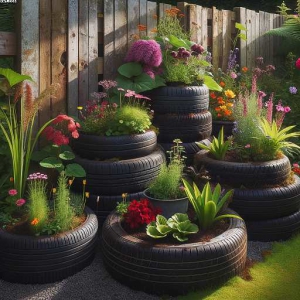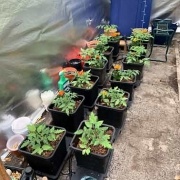Foliar Feeding or Not
Foliar Feeding
Foliar Feeding
So, the truth is that I have only tried foliar feeding once, and that was earlier this year. Because I write this blog for a well-known hydroponic store here in Yorkshire (I now write out of my own interest in gardening, including hydroponics), I often get free samples to test. So I started to feed a couple of my lemon trees with a foliar feed. The plants are growing well, but so are the others. As a result, no true comparisons can be made with the pot-fed plants.
Many hydroponic gardeners are apparently now using foliar food techniques. Of course, the leaves can easily absorb the nutrients, just as soil feeding can. So, for growers who are not sure, I will try and make some observations in this post.
6 good reasons to foiler feed your plants
- Improved nutrient uptake: Foliar feeding allows plants to absorb nutrients more efficiently through their leaves, rather than just relying on the roots. This can be particularly useful for plants that are experiencing nutrient deficiencies or for plants that are growing in poor soil.
- Faster results: Foliar feeding can produce results more quickly than traditional soil-based feeding because the nutrients are absorbed directly by the plant. This can be especially beneficial if a plant is struggling and needs an immediate boost.
- Easier application: Foliar feeding is relatively easy to do and requires fewer materials than traditional soil-based feeding. All you need is a spray bottle or garden sprayer and the nutrient solution you want to apply.
- Can be used as a supplement: Foliar feeding can be used in addition to traditional soil-based feeding as a way to supplement a plant’s nutrient intake. This can be particularly useful for plants that are heavy feeders or that are growing in a soil that is nutrient-poor.
- Can be used to target specific nutrients: Foliar feeding allows you to target specific nutrients that a plant may be lacking. For example, if a plant is showing signs of a calcium deficiency, you can apply a calcium-rich foliar feed to address the problem.
- Can help to prevent nutrient imbalances: Foliar feeding can help to prevent nutrient imbalances in the soil by allowing plants to absorb the nutrients they need directly through their leaves. This can help to prevent problems such as nutrient lockout, which occurs when a plant is unable to access certain nutrients in the soil due to an excess of other nutrients.
Foliar Feeding, What is it!
Of course, plants use their leaves to take in moisture and absorb gases. enabling the leaves to take in and absorb a nutrient solution supplied by the grower or gardener. The nutrients take in the feed through the leaves’ pores. So, this makes the leaves an excellent place to enhance the growth of the plant and improve the size of the plant’s crop. Accordingly, plants are best sprayed with a nutrient spray in the early stages of growth. Another advantage is that the spray can also be used to aid the growth of your sick and ill plants. aiding recovery at a faster rate than, say, foiler feeding.
Of course, in my opinion, foliar feeding should be restricted to small growers. Subsequently, the growers of larger crop quantities, such as farmers, cannot have any chemicals on their plants. There may be a problem with pollution on the vegetation for human consumption before the crop is harvested.
Even in a small grower’s crop, the plants should be cleaned before being eaten. Especially when supplemented with foliar feed. Another option is that root feeding can take over from foliar feeding about a month before harvesting.
Soil feeding the most popular-Foliar Feeding
So, there is no doubt that feeding plants through the soil or growing medium is the most popular way. Regular composts will contain the correct nutrients to give your young plants a good start in life. After that, you can just add organic nutrients to the plant’s pot .
Either by mulching with well rotted animal manure or adding feed in the correct quantities via watering. Importantly, I use an hydronic system by using a large plastic water tank and adding the correct dosage of “CX Hydro Base A and B” to the water. Of course there are hundreds of brands and nutrient types that the grower can use.
My problem with feeding, whatever method I use, is that I am not good at a regular feeding regime. So, I am a bit hit and miss when it comes to regular feeding. My wife says that I should write things down! However, I always seem to get a decent crop with whatever I grow. So I must be doing something right, or am I just lucky?
Finally, I don’t believe there is a best way to feed! So, it’s up to the grower to try the different methods of feeding. The main thing is the correct dosage and the correct time to apply the feed.
Please do not forget that there is going to be a ban on using “Peat” as a mulch and other substitutes such a Coco products.


